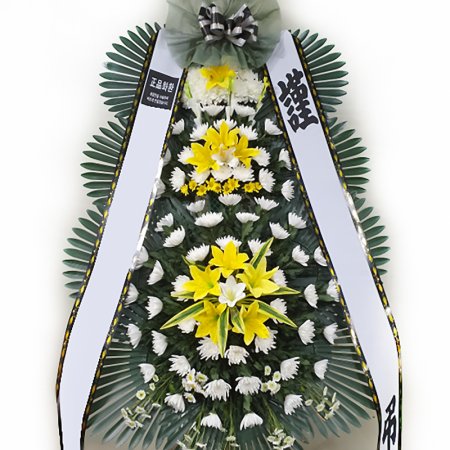[문화재청](국영문 동시 배포) 『실크로드 연구사전 동부 : 중국 신장』발간
정책
0
393
0
2019.12.18 10:55

? 문화재청 국립문화재연구소(소장 최종덕)는 실크로드 지역인 중국 신장(新疆)의 동부지역에 대한 유적과 유물 연구를 집대성한 ?실크로드 연구사전 동부 : 중국 신장?을 발간하였다.
? ?실크로드 연구사전 동부 : 중국 신장?은 우리 역사와 문화에 많은 영향을 끼쳤던 실크로드 지역 연구를 활성화하고 자료수집과 접근이 어려운 한계를 극복하기 위한 취지로, 2016년부터 4년간 30여 명의 국내 연구진이 참여하였다.
실크로드와 신장 지역의 역사문화에 대한 이해를 돕는 개관 표제어 28건과 주요 지역의 유적?유물에 대한 표제어 411건 등 총 439건이 수록됐다.
? 지리적으로는 톈산북로와 남로로 나누고, 내용상으로는 역사?고고?불교?공예?복식으로 크게 구분하여 서술하였다. 이 외에 고성(故城), 무덤, 불교 사원, 주거지, 암각화 등 다양한 유적과 유물을 수록하였다. 각종 사진과 지도 등 시각자료도 풍부하게 실어 독자들이 쉽게 이해하도록 하였으며 부록으로 참고문헌과 도판 목록, 색인 등을 충실히 담아 관련 분야 연구의 기초 자료로 활용할 수 있도록 하였다.
? 이번『실크로드 연구사전 동부 : 중국 신장』은 지금까지 축적된 국내외의 연구 성과를 집대성하였다는 것에 의의가 있다. 특히, 기존 서구 중심의 시각에서 벗어나 우리의 시각을 중심으로 신장 지역을 바라보고자 국내 관계전문가들이 국내의 연구 성과와 최근까지의 연구경향을 반영하였다.
? 국립문화재연구소는 이번에 발간한『실크로드 연구사전 동부 : 중국 신장』에 이어 2021년에는 후속 편인『실크로드 연구사전 서부 : 중앙아시아』도 발간할 계획이다.
? ‘신장위구르자치구’는 중국의 북서쪽에 위치하여 고대에는 ‘서역(西域)’이라 불렸고, 파미르 고원의 동쪽에 위치한 투르크의 땅이라는 의미로 ‘동투르키스탄(East Turkistan)’으로 불리기도 한다. 지금의 ‘신장(新疆)’은 새로운 강역(疆域)이라는 뜻으로 18세기 청(淸) 왕조에 의해 붙여진 이름이다. 여러 산맥들과 사막, 초원, 오아시스 도시들로 이루어진 신장에는 다양한 인종과 문화가 공존하면서 동서 문명의 교류가 이루어졌고, 건조한 사막 기후로 당시의 유적?유물들이 잘 남아 있다. 이곳은 19세기 말부터 서구의 많은 탐험가, 조사자들에 의해 다양한 유적과 유물이 발견되었고, 지금도 활발하게 조사연구가 이루어지고 있다.
? 국립문화재연구소는 한국 고대 문화의 뿌리를 찾아 복원하고, 실크로드 선상에서 중앙아시아, 몽골 등 여러 국가와의 교류 양상을 밝히고자 2015년부터 ‘한민족 고대문화 네트워크 복원’ 사업을 추진하고 있다. 첫 성과물로 카자흐스탄의 실크로드를 종합적으로 소개하는 한국어 번역서『카자흐스탄의 실크로드』(2017)를 비롯하여 카자흐스탄의 황금문화와 우리나라 고대 국가와의 교류상을 폭넓게 이해할 수 있는『카자흐스탄 초원의 황금문화』(2018)를 펴낸 바 있다.
? 문화재청 국립문화재연구소는 앞으로도 책임운영기관으로서 중앙아시아, 중국 등 유라시아 문화와 고대 실크로드 분야의 지속적인 조사?연구를 진행하고 그 성과를 국민과 공유하기 위해 노력할 것이다.
『Encyclopedia of the Silk Road Eastern Region: Xinjiang of China』Published
- The National Research Institute of Cultural Heritage covers 439 remains and artifacts in Xinjiang, China -
?
The National Research Institute of Cultural Heritage (Director-General Choi Jong-deok) of the Cultural Heritage Administration has published "Encyclopedia of the Silk Road Eastern Region: Xinjiang of China" by compiling the studies of remains and artifacts in eastern Xinjiang, China, which is part of the Silk Road.
Over the four years since 2016, more than 30 Korean researchers have participated in "Encyclopedia of the Silk Road Eastern Region: Xinjiang of China" with the aim to promote research on the Silk Road, which greatly influenced Korean history and culture, and to overcome the limitations to collect and access data.
It includes a total of 439 entries, including 28 overview entries that help understand the history and culture of the Silk Road and the Xinjiang region, and 411 entries on remains and artifacts in major regions.
Geographically, the region was divided into roads north and south of the Tianshan Mountains, while the contents were divided into history, archeology, Buddhism, crafts, and clothing. In addition, the glossary covers a variety of remains and artifacts, including old castles, tombs, Buddhist temples, dwellings, and petroglyphs. It also features plenty of images, such as photographs and maps, to make it easier for readers to understand. References, a list of illustrations, and an index were included as appendices so that they can be used as basic data for research in related fields.
The "Encyclopedia of the Silk Road Eastern Region: Xinjiang of China" is significant in that it compiled the domestic and international research findings accumulated thus far. In particular, Korean relations experts reflected the results of domestic research as well as recent research trends in an effort to look at the Xinjiang region from our own perspective, moving away from the previous western-oriented view.
The National Research Institute of Cultural Heritage also plans to publish "Encyclopedia of the Silk Road Western Region: Central Asia" in 2021 following "Encyclopedia of the Silk Road Eastern Region: Xinjiang of China" published this time.
The Xinjiang Uygur Autonomous Region, located northwest of China, was called "Western Regions" in ancient times and is also called "East Turkistan," which means the land of Turks located east of the Pamir Mountains. The current name "Xinjiang," meaning "new borderland," was made by the Qing Dynasty in the 18th century. In Xinjiang, which consists of various mountain ranges, deserts, grasslands, and oasis cities, the coexistence of various races and cultures led to exchanges between East and West civilizations, and the remains and artifacts of the time have been well preserved due to the dry desert climate. Since the end of the 19th century, many western explorers and investigators have discovered a variety of remains and artifacts, and research is still being actively conducted today.
The National Research Institute of Cultural Heritage has been carrying out the "Restoration of Korea's Ancient Culture Network" project since 2015 to find and restore the roots of Korean ancient culture and to shed light on exchanges with countries, such as Central Asia and Mongolia, on the Silk Road. As the first outcome, it published the Korean translation of "The Silk Road of Kazakhstan" (2017), which provides a comprehensive introduction to the Silk Road in Kazakhstan, followed by "Gold of the elite of Kazakh Steppes" (2018), which provides a broad understanding of Kazakhstan's golden culture and exchanges with ancient Korean nations.
As a responsible operation agency, the National Research Institute of Cultural Heritage of the Cultural Heritage Administration will continue to conduct surveys and research on Eurasian culture and the ancient Silk Road, including Central Asia and China, and share its achievements with the public.
?
[자료제공 :



























































